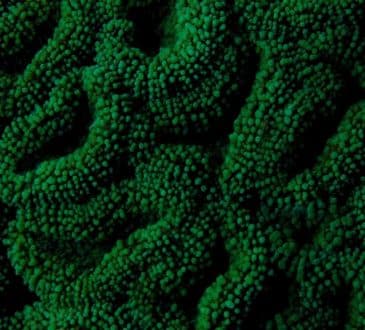Dark Legacies: A Chronicle of History’s Most Notorious Poisonings

Commonalities link arsenic, cyanide, and mercury – their potential lethality when ingested in significant amounts. Naturally occurring, these chemical elements and compounds pose serious health risks.
Certain plants, like water hemlock and nightshade, as well as specific mushroom varieties, also harbor toxins capable of causing severe illness or death. Throughout history, these substances have been employed as poisons.
In ancient times, poisoning served as a prevalent method for eliminating political adversaries or troublesome relatives, often escaping detection due to the absence of autopsy evidence pinpointing poison as the cause of a sudden, seemingly inexplicable death.
A compilation of historically acknowledged poisoning incidents, drawn from both historical records and contemporary news articles, forms the basis of our exploration. These cases, universally accepted by historians as instances of poisoning, exclude occurrences like gas leaks and carbon monoxide poisoning. Mass poisonings and large-scale terror attacks are similarly omitted from consideration.
Remarkably, the majority of these poisonings unfolded within governmental or royal spheres. Going back to the Persian Empire conflicts over royal succession frequently culminated in fatal poisonings. The annals of Ancient China, Greece, Arabia, and Rome bear witness to the poisoning of prominent political and religious leaders, truncating their tenures.
The 20th century witnessed poisoning victims among Soviet defectors, political dissidents in Communist Eastern Europe pre-World War II, and targeted assassinations in the Soviet Union involving political, religious, and scientific figures. Post-World War II, a somber note emerged as several Nazis opted for suicide by poison to evade capture or punishment for war crimes.
Notably, unintended poisonings are mentioned, such as the tragic 1920 death of a film star who inadvertently consumed a toxic medication containing mercury.
Socrates
Deceased: 399 B.C. Following a court trial that declared him guilty of impiety and corrupting the youth, the Greek philosopher Socrates received a death sentence. Athenian law dictated the consumption of poison hemlock, disrupting nerve impulses to muscles and ultimately causing respiratory failure.
Artaxerxes III
Deceased: 338 B.C. Upon ascending to the throne of the first Persian Empire, Artaxerxes III eliminated the remaining royal family members to secure his position. However, his chief adviser, Bagoas, orchestrated Artaxerxes’ demise through poisoning by the royal doctor, aiming to place one of the king’s sons on the throne.
Artaxerxes IV
Deceased: 336 B.C. Following the poisoning of his father, King Artaxerxes III, by the vizier Bagoas, Arsеs, known as Artaxerxes IV, assumed the throne. When Bagoas realized he could not manipulate the young king, he poisoned Arsеs along with the rest of his family.
Bagoas
Deceased: 336 B.C. After poisoning King Arsеs, the eunuch and vizier Bagoas installed a cousin of Arsеs, Darius III, as king. Discontent with Darius, Bagoas attempted to poison him, but Darius compelled Bagoas to drink the poison himself, finally ending the conniving courtier’s schemes.
Demosthenes
Deceased: 322 B.C. An Athenian politician who led a revolt against the new Macedonian king, Alexander the Great, Demosthenes, was captured by Macedonian forces. To evade imprisonment, he feigned a desire to write a final letter to his family and chose to end his life by consuming poison concealed in a reed pen.
Aratus of Sicyon
Deceased: 213 B.C. A Greek politician and military commander, Aratus led the city-state Sicyon and played a significant role in the Achaean League. Despite initially advising Macedonian King Philip V, Aratus’s health mysteriously declined as disagreements arose. It is widely believed that Philip had him poisoned.
Xu Pingjun
Deceased: 71 B.C. When her husband, a commoner, unexpectedly became Emperor, Xu Pingjun became empress of the Western Han Dynasty. A fellow courtier, aspiring to make her daughter empress, bribed Empress Xu’s physician to poison her with aconite. The plot succeeded, and the conspirator’s daughter married the widowed Emperor.
Antipater the Idumaean
Deceased: 43 B.C. Father of Herod I, King of Judea, Antipater, the founder of the Herodian Dynasty, allied with Julius Caesar. However, a rival bribed a cup-bearer to poison Antipater, leading to his assassination.
Drusus Julius Caesar
Deceased: 23 As the son of Roman Emperor Tiberius, Drusus Julius Caesar was a politician and heir to the Roman Empire. Amidst a rivalry with Sejanus, the commander of the Praetorian guard, Drusus died suddenly. It is believed that Sejanus had him poisoned by his own wife.
Emperor Claudius
Deceased: 54 Following the assassination of Caligula, Claudius ascended as the fourth Roman Emperor. Demonstrating competence as a ruler and with a designated successor in his son, Claudius faced an untimely demise. Historians concur that his fourth wife, Agrippina, poisoned him, likely with toxic mushrooms, in a bid to ensure her son (Claudius’s stepson Nero) would inherit the throne.
Emperor Zhi
Deceased: 146 Despite being a mere 7-year-old upon becoming Emperor, Han Zhi Di displayed remarkable intelligence. Recognizing the perilous influence wielded by the corrupt military, General Liang Ji may have cost him his life. A year into his reign, Liang Ji is believed to have poisoned the young Emperor.
Emperor Hui
Deceased: 304 Emperor Hui of the Jin Dynasty faced a tumultuous reign marked by power struggles among family members and regents vying for control over the malleable Emperor. Ultimately, he fell victim to poisoning orchestrated by his final regent, Sima Yue, aiming to install his own puppet emperor.
Ali ibn Abi Talib
Deceased: 661 A kin and companion of the Islamic prophet Muhammad, Ali ibn Abi Talib, emerged as a prominent Muslim leader after Muhammad’s death. Amidst civil war and political turmoil, he met his end at the hands of a member of the rival Khariji sect. Ibn Muljam, the assassin, wielded a poison-coated sword, leading to Ali’s demise two days later.
Umar II
Deceased: 720 Umar bin Abdul Aziz, the eighth caliph of the Umayyad Caliphate, earned renown as a devout and pious Muslim ruler. However, at the age of 37, he succumbed to illness, allegedly poisoned by a slave bribed by dissenting members of the ruling family opposed to his reign.
Muhammad al-Baqir
Deceased: 733 Muhammad al-Baqir, the fifth Imam of Shia Islam, known for just leadership, met an uncertain fate. While there’s no consensus on the assassin or motive, a prevalent account suggests he died after using a poisoned saddle, possibly provided by a caliph or family member.
Musa al-Kadhim
Deceased: 799 The seventh Imam of Shia Islam, Musa al-Kadhim, lived through a politically divided era with persecution of Shiite imams. Imprisoned three times, he met his end during the final captivity by being compelled to consume poisoned dates.
Beorhtric of Wessex
Deceased: 802 King of Wessex during the initial Viking raids on England, Beorhtric’s demise in 802 is attributed to inadvertently ingesting a poisonous concoction prepared by his ambitious wife, Eadburh, who wielded significant ruling power.
Muhammad al-Jawad
Deceased: 835 The ninth Imam of Shia Islam, Muhammad al-Jawad, assumed leadership at a young age and Deceased at 25, becoming the youngest of all Shia imams to die. His likely poisoning is attributed to his wife, acting on orders from the new caliph, Al-Mu’tasim.
Romanus II
Deceased: 963 Ascending the Byzantine throne at the tender age of 21, Romanus II fell mysteriously ill and passed away four years into his reign. The prevalent belief of the time suggested poisoning by his wife, Theophano, who subsequently assumed regency for her sons and quickly remarried a military general.
Alan III
Deceased: 1040 Duke of Brittany during Norman rule, Alan III of Rennes, met a mysterious demise while besieging a Norman castle. Strong suspicions point to poisoning, likely orchestrated by the Normans amid his numerous raids on their cities.
Constantine II
Deceased: 1129 Briefly holding power as the Prince of Armenian Cilicia after his father’s demise, Constantine II faced imprisonment and eventual poisoning. His uncle Leon ascended to the throne following Constantine’s untimely death.
Alphonse I
Deceased: 1148 Alfonso Jordan, Count of Toulouse from age 2, grappled with maintaining control of his lands and faced excommunication twice from the Catholic Church. Endeavoring to join the Second Crusade, he was poisoned, with suspicions pointing to figures like Eleanor of Aquitaine, Queen of France.
Baldwin III
Deceased: 1162 Respected as the fifth Latin king of Jerusalem during the Second Crusade, Baldwin III’s leadership did not shield him from poisoning suspicions. A Syrian Orthodox doctor, possibly sent by the Count of Tripoli, is implicated in his untimely death.
Blanche of Bourbon
Deceased: In 1361, the first wife of King Peter of Castile, Blanche of Bourbon, endured abandonment and imprisonment. Historical records suggest her death involved herbal poison, possibly orchestrated by the king, who favored his mistress.
Louis of Durazzo
Deceased: 1362 Count of Gravina, Louis of Durazzo, faced imprisonment for inciting rebellions against Queen Johanna I of Naples. Poisoned while confined in the Castel dell’Ovo, his turbulent life ended amid the power struggles in the Neapolitan court.
Robert IV of Artois
Deceased: 1387 Inheriting his father’s title, Robert IV never learned of it due to his death by poisoning in Naples. The culprit, his wife’s sister Margaret, Queen Regent of Naples, orchestrated the fatal plot.
Dmitry Shemyaka
Deceased: 1453 Engaged in a tumultuous power struggle for control of Moscow, Dmitry Shemyaka succumbed to poisoning while dining on chicken. Allegedly orchestrated by Vasily II, his cousin and Grand Prince of Moscow, the poisoning secured Vasily’s sovereignty.
Giovanni Pico della Mirandola
Deceased: 1494 The mysterious demise of Renaissance philosopher Giovanni Pico della Mirandola was unveiled in 2007 upon exhumation. Arsenic poisoning, evidenced by toxic levels found in his bones, suggested a possible orchestration by a member of the ruling Medici family.
Juan Ponce de León
Deceased: 1521 Spanish conquistador Juan Ponce de León, renowned for multiple New World expeditions, served as governor of Puerto Rico and amassed wealth as a plantation owner. His attempt to establish a Spanish colony in present-day Florida ended tragically when indigenous Calusa people wounded him with a poisoned arrow. Escaping to Cuba, Ponce de León succumbed to the wound.
Mikhail Skopin-Shuisky
Deceased: 1610 Russian military commander Prince Mikhail Skopin-Shuisky diligently worked to strengthen his cousin Vasili IV’s rule. Mysteriously, at the age of 23, he Deceased after drinking wine at a baptism. Suspicions point to Vasili’s younger brother, Dmitri, who perceived Skopin-Shuisky as a threat to his chances of succession.
Yamada Nagamasa
Deceased: 1630 Japanese explorer Yamada Nagamasa, attaining considerable power in the Siamese kingdom of Ayutthaya, met a tragic end. Objecting to a coup led by Prasat Thong, he was poisoned, enabling Thong to ascend as the next King of Siam.
Olive Thomas
Deceased: 1920 Promising Broadway and silent film star Olive Thomas met an untimely demise in Paris. Accidentally ingesting her husband’s topical syphilis medication, she suffered kidney failure and passed away five days later.
Nestor Lakoba
Deceased: 1936 Communist leader Nestor Lakoba, fighting for Abkhaz independence during the U.S.S.R.’s formation, fell victim to poisoning by Lavrenti Beria, head of Soviet secret services, aiming to consolidate power over Georgia.
Abram Slutsky
Deceased: 1938 Soviet official Abram Slutsky, engaged in international espionage, became a victim of the Great Purge. Poisoned, possibly with hydrogen cyanide, on orders of the new head of secret services.
Nikolai Koltsov
Deceased: 1940 Renowned Russian biologist Nikolai Koltsov faced an unexpected demise amid a Marxist regime rejecting genetics. Poisoned by Soviet secret services, his death unfolded in 1940.
Erwin Rommel
Deceased: 1944 Decorated German general Erwin Rommel, implicated in the July 20 assassination attempt on Adolf Hitler, opted for suicide by cyanide to spare his family disgrace before his scheduled trial.
Eva Braun
Deceased: 1945 Companion of Adolf Hitler, Eva Braun chose cyanide capsule-induced suicide as Soviet forces approached Berlin during World War II.
Heinrich Himmler
Deceased: 1945 Nazi officer Heinrich Himmler, architect of the Holocaust, committed suicide by cyanide capsule while in British custody after the Nuremberg Trials.
Hermann Göring
Deceased: 1946 Commander of the Nazi Luftwaffe, Hermann Göring, convicted of war crimes, committed suicide by ingesting cyanide on the eve of his scheduled hanging.
Theodore Romzha
Deceased: 1947 Bishop Theodore Romzha, resisting Soviet pressure to align with the Russian Orthodox Church, was assassinated on orders from Nikita Khrushchev, poisoned by a nurse with curare.
Alan Turing
Deceased: 1954 Renowned British mathematician Alan Turing, pivotal in WWII code-breaking, died from cyanide poisoning in what is ruled as suicide but speculated to be accidental.
Stepan Bandera
Deceased: 1959 Ukrainian Nationalist Stepan Bandera, considered a terrorist by Poland and the Soviet Union, was murdered by cyanide gas poisoning in Munich.
Bandō Mitsugorō VIII
Deceased: 1975 Famed kabuki actor Bandō Mitsugorō VIII purposely ingested a highly toxic pufferfish liver, asserting his ability to withstand the poison, resulting in his demise.
Georgi Markov
Deceased: 1978 Bulgarian dissident Georgi Markov, critical of the communist regime, died after being injected with a microscopic pellet containing an unknown poison.
Ibn al-Khattab
Deceased: 2002 Sunni jihadi fighter Ibn al-Khattab, involved in Chechen Wars, died from a poisoned letter provided by a courier hired by Russian secret services.
Roman Tsepov
Deceased: 2004 Russian businessman Roman Tsepov, linked to Putin and organized crime, succumbed to poisoning by a radioactive agent.
Alexander Litvinenko
Deceased: 2006 Former Russian secret service officer Alexander Litvinenko, critical of the Russian government, was poisoned by radioactive polonium-210, leading to Russia’s responsibility.
Garnett Spears
Deceased: 2014 Five-year-old Garnett Spears, a victim of Munchausen syndrome by proxy, died from salt poisoning, leading to his mother’s conviction for murder.
Slobodan Praljak
Deceased: 2017 Convicted of war crimes, Croatian Army general Slobodan Praljak committed suicide by drinking cyanide in a courtroom after rejecting a guilty verdict.
Dawn Sturgess
Deceased: 2018 Dawn Sturgess succumbed to Novichok nerve agent poisoning, unintentionally sprayed from a perfume bottle found in a trash can in England.
Have you read?
Greatest military strategists and leaders in history who have excelled in wartime.
Top countries that admire their CEOs and other C-suite leadership teams the most.
Top Women CEOs of America’s largest public companies (2023 List).
CEOs Of The Top Footwear Companies You Should Know.
Top CEOs of the World’s Largest Media Companies In 2023.
Best International High Schools In The World, 2023.
Bring the best of the CEOWORLD magazine's global journalism to audiences in the United States and around the world. - Add CEOWORLD magazine to your Google News feed.
Follow CEOWORLD magazine headlines on: Google News, LinkedIn, Twitter, and Facebook.
Copyright 2025 The CEOWORLD magazine. All rights reserved. This material (and any extract from it) must not be copied, redistributed or placed on any website, without CEOWORLD magazine' prior written consent. For media queries, please contact: info@ceoworld.biz











